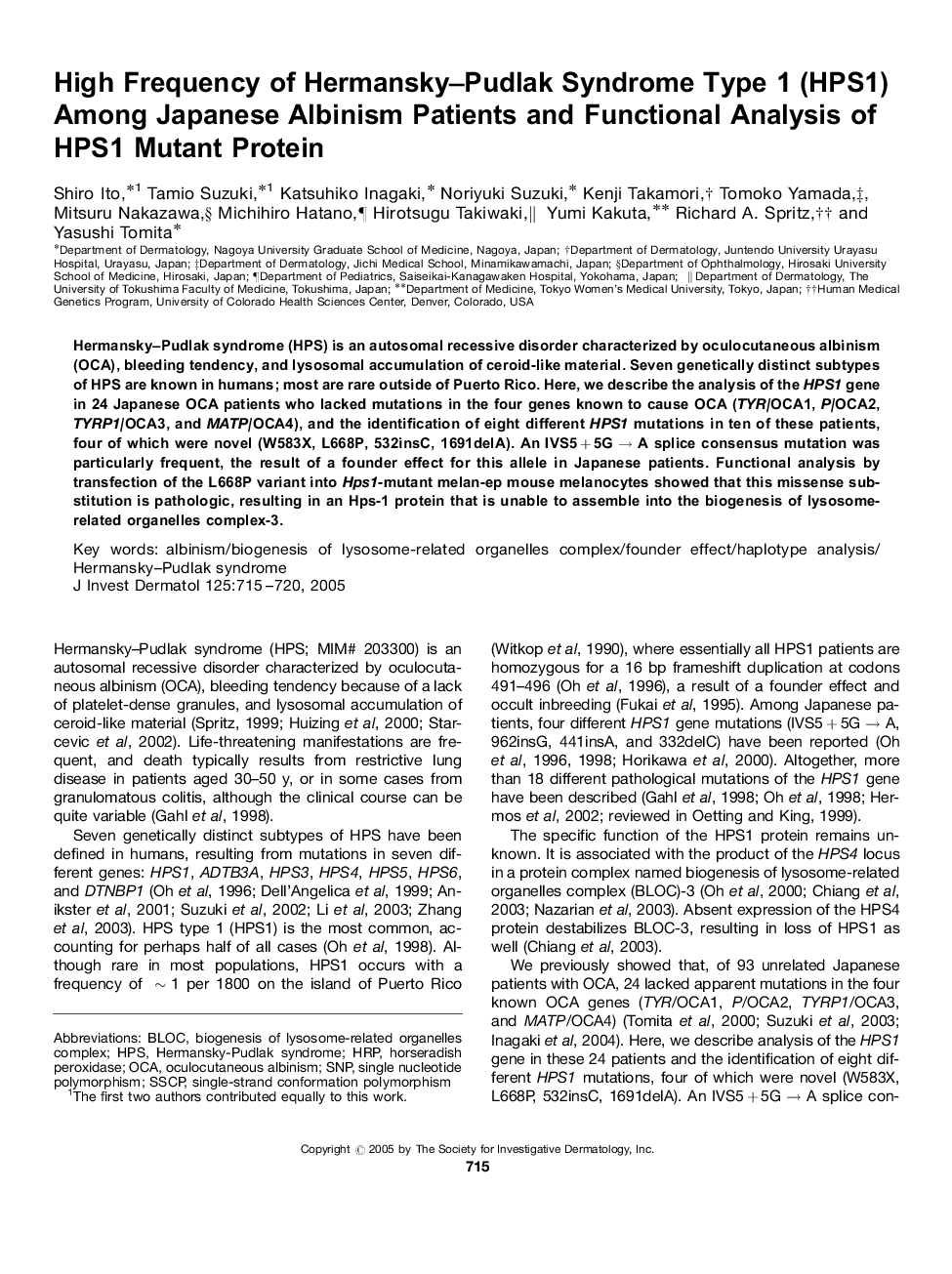| Article ID | Journal | Published Year | Pages | File Type |
|---|---|---|---|---|
| 9230190 | Journal of Investigative Dermatology | 2005 | 6 Pages |
Abstract
Hermansky-Pudlak syndrome (HPS) is an autosomal recessive disorder characterized by oculocutaneous albinism (OCA), bleeding tendency, and lysosomal accumulation of ceroid-like material. Seven genetically distinct subtypes of HPS are known in humans; most are rare outside of Puerto Rico. Here, we describe the analysis of the HPS1 gene in 24 Japanese OCA patients who lacked mutations in the four genes known to cause OCA (TYR/OCA1, P/OCA2, TYRP1/OCA3, and MATP/OCA4), and the identification of eight different HPS1 mutations in ten of these patients, four of which were novel (W583X, L668P, 532insC, 1691delA). An IVS5+5GâA splice consensus mutation was particularly frequent, the result of a founder effect for this allele in Japanese patients. Functional analysis by transfection of the L668P variant into Hps1-mutant melan-ep mouse melanocytes showed that this missense substitution is pathologic, resulting in an Hps-1 protein that is unable to assemble into the biogenesis of lysosome-related organelles complex-3.
Keywords
Related Topics
Health Sciences
Medicine and Dentistry
Dermatology
Authors
Shiro Ito, Tamio Suzuki, Katsuhiko Inagaki, Noriyuki Suzuki, Kenji Takamori, Tomoko Yamada, Mitsuru Nakazawa, Michihiro Hatano, Hirotsugu Takiwaki, Yumi Kakuta, Richard A. Spritz, Yasushi Tomita,
